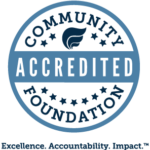Guide to Giving: Ways to Give
Jun 19, 2018
This is the first article in a Guide to Giving blog series by contributing editor Richard B. Freeman. Richard is a Senior Director, Wealth Advisor at Round Table Wealth Management and a member of FCCF’s Professional Advisors Council.
You have decided that “giving back” by donating to charity is something you are ready to pursue. Friends, the news media, your alma mater—all have mentioned different ways to give. There are various ways to give to charity but the best method for giving will depend on your objectives and financial circumstances. There are several considerations in choosing the best method. First, when does the charity get the funds—now or later? Second, will you be funding your gifts up-front and/or spreading them out over time? Third, what are the income tax benefits related to the gift? Finally, how complex is the method to administer? The most common ways to give are explored below:
Direct Gift
The simplest way to give to a charity is to make a direct gift. By making a direct gift you get an immediate income tax deduction and the charity receives the funds right away. You can write a check, use a credit card or transfer an asset directly to the charity. If you are planning to write a check toward the close of the calendar year make sure to get it in the mail and have it postmarked before year-end.
Direct gift income tax considerations include both the nature of the gift—cash or noncash property—and the overall deduction limits. For cash gifts you can deduct up to 60% of your Adjusted Gross Income (AGI) in the year of the gift. Any unused deduction may be carried forward five years. For noncash property the limit is 30% of AGI plus a five-year carryforward. For noncash property with a long-term capital gain, the deduction is valued at the fair market value of the gift. Gifting this way lets you avoid triggering a capital gains tax had you sold the asset and given cash.
Private Foundation
A Private Foundation is a legal entity created by a donor exclusively to perform charitable work. It can be operated much like a business, with a Board of Directors, employees, mission statements, etc., to facilitate the Foundation’s purpose. Family involvement in pursuing a charitable mission is often an important factor in establishing a Private Foundation. Funding may be made at inception in addition to ongoing contributions. Distributions to public charities can be spread over time—with an annual requirement of at least 5% of assets distributed. The Foundation controls all investment activities.
Income tax deduction limits are 30% of AGI for cash contributions and 20% for noncash contributions. There is a five-year carryforward of any unused deductions for each. For noncash public appreciated property (e.g., public stock) the deduction is valued at fair market value. For private appreciated property (e.g., artwork, collectibles or a business interest), the deduction is limited to the property’s cost basis.
Private Foundations have some downsides that may not appeal to everyone. They can be somewhat complex to initiate and operate, thus it is often recommended that at least $1 million is the minimum funding amount for a Private Foundation. There can be an excise tax (1% or 2%) on the net investment income. An excise tax of 30% may also be imposed to the extent the 5% annual distribution requirement is not met. And unlike other means of giving, the requirement to file an organization income tax return (Form 990-PF) means the Foundation’s operations will be public.
Donor Advised Fund (DAF)
A Donor Advised Fund is an increasingly popular charitable tool. You can set up a DAF at a sponsoring organization—a community foundation, investment custodian, bank, etc. It can be funded at inception with the ability to make ongoing contributions. You make grant recommendations to the sponsoring organization which then makes distributions to public charities. There is no annual distribution requirement. The sponsoring organization takes care of all administrative duties—administering grant requests, tax reporting, etc. The initial fund size can be small, as little as $5,000, depending on the requirements of the sponsoring organization. Depending on the account size, investment options range from pooled investment funds for smaller accounts to individually managed portfolios where the donor/advisor can recommend investment options for larger accounts. All of the activities are private. The income tax rules for annual limits and how cash and noncash gifts are treated in contributing to a DAF are the same as for Direct Gifts noted above.
Targeted Grant Making
There are several options for those who desire assistance in selecting and/or managing the grant process to the ultimate beneficiaries of their charitable funds. You place funds with a charitable institution (e.g., college or community foundation), agree on a purpose for the funds and the organization administers the fund for you. One common option is a Scholarship Fund where the organization selects the recipient according to criteria you establish. Another is a Designated Fund (typically directed to a limited number of charities) where the organization manages the grant process and has the authority to redirect grants if the charity ceases to exist or changes its mission. Finally, you can donate to a Field of Interest Fund—where you pool your funds with other like-minded donors to support a specified cause or issue. The income tax aspects of these options are the same as for Direct Gifts.
IRA Charitable Rollover
For individuals who are age 70 ½ or older a “qualified charitable distribution” may be made from their traditional IRA to eligible charitable organizations. There is a limit of $100,000 per year and the distribution counts toward satisfying the individual’s Required Minimum Distribution for the year. A charitable income tax deduction is not available, but the distribution is excluded from gross income. This may keep you from entering a higher tax bracket. Most of the categories noted above except for Donor Advised Funds and some types of Private Foundations are eligible charitable organizations.
Please note that IRA funds which do not meet the requirements of “a qualified charitable distribution” may still be used for fulfilling charitable goals. Distributions must be included in Gross Income, but you are able to take a charitable income tax deduction. This strategy should be considered only by individuals over age 59 ½ to avoid the 10% penalty tax on early distributions from IRAs.
Whatever your charitable goals are, Fairfield County’s Community Foundation (FCCF) can help you determine the best way to reach them. Many options are available: https://fccfoundation.org/ways-to-give/
Please contact Mike Rosen, Chief Revenue & Business Development Officer at (203) 750-3200 or MRosen@fccfoundation.org for a personal conversation about your charitable goals.
More on Richard B. Freeman
 Richard B. Freeman is a Senior Director, Wealth Advisor at Round Table Wealth Management. He is a member of FCCF’s Professional Advisor Council.
Richard B. Freeman is a Senior Director, Wealth Advisor at Round Table Wealth Management. He is a member of FCCF’s Professional Advisor Council.
Rich can be reached at (203) 658-6740 or rich@roundtablewealth.com.
Website: https://www.roundtablewealth.com/
LinkedIn: https://www.linkedin.com/in/richardbfreeman
Consult your tax advisor for the best options for your personal circumstances; your tax advisor can help you with both the confirmation of the proper tax treatment of a contemplated strategy plus whether you should use a charitable income tax deduction or a standard deduction; The Tax Cut and Jobs Act of 2017 has impacted this decision for many taxpayers.

